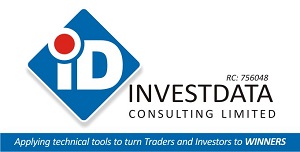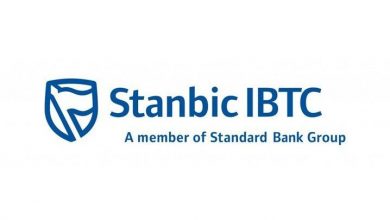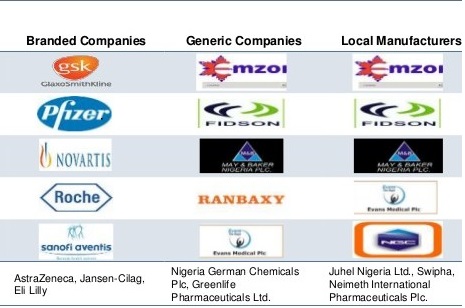
- Investors should look the way of this sector, depending on their investment goals and objectives.
By Tunde Segun Jeariogbe
The Coronavirus pandemic is one that the world will not forget in a hurry because of its devastating effects on national and global economies, the communities, families, and personal lives since the beginning of last year, throwing many into negative territory.
However, given the huge investments in the nation’s health sector and indeed, events of Covid-19 in Nigeria has positively impacted the sector in Nigeria, widening business opportunities therein.
The nation’s fiscal and monetary authorities came up with list of policies to ease the operating environment for participating organizations. This report shall, therefore, review some of those measures and their expected impact on the bottom-line of operators in the sector listed on the Nigerian Stock Exchange (NSE). We shall also compare same with numbers for corresponding period of the 2019 financial year.
CBN Healthcare Sector Fund
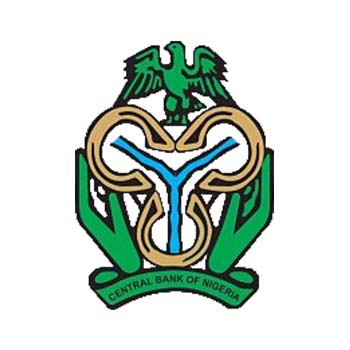
The credit support for the nation’s healthcare sector is an on-lending intervention scheme developed by the Central Bank of Nigeria (CBN) as part of proactive measures to cushion the economic impact of the pandemic, the index case of which entered the country on February 27, 2020.
The CBN initiative was developed to provide funding to indigenous pharmaceutical companies and other players in the healthcare value chain, enabling them increase capacity to meet the growing demand arising from the pandemic, especially as many could no longer seek medical attention abroad because of the lockdown imposed by many countries to check the spread of the ravaging virus. The policy measures of the loan include:
- Extending the moratorium on all principal repayments by an additional year, while reducing the interest rate payable on all CBN intervention facilities from 9% to 5%.
- Creating a N50 billion targeted credit facility for households and Small and Medium Enterprises (SMEs), besides providing a credit facility for the healthcare industry.
In furtherance of its objective to provide a credit facility for the healthcare industry, the CBN released guidelines for the operation of its N100 Billion Credit Support for the Healthcare sector (the Scheme), covering the following areas:
- Manufacture of pharmaceutical drugs and medical equipment,
- Establishment/expansion/upgrade of basic and specialised healthcare facilities,
- Provision of medical/ pharmaceutical supplies.
- Supporting medical/pharmaceutical research and development (R&D),
- Distribution of medical/pharmaceutical drugs and supplies.
- Manufacture of medical/pharmaceutical drugs distribution technology; and
- Any other healthcare value-chain activity as may be prescribed by the CBN from time to time.
FG’s VAT, Import Duty Waivers On Medical Supplies

On Thursday, 30 April 2020, Mrs. Zainab Shamsuna Ahmed, Nigeria’s Minister of Finance, Budget and National Planning, issued a Circular (“the Circular”) conveying the approval of President Muhammadu Buhari, for the implementation of new fiscal policy measures aimed at facilitating the importation of essential medical supplies to combat the Coronavirus (COVID-19) pandemic in the country.
Specifically, the Circular exempts importers of specified medical supplies from payment of import duties and Value Added Tax (VAT) on these items for an initial six-month period, with effect from 1 May 2020. Items in the list are:
- Covid-19 text kits and apparatus
- Protective garments
- Thermometers
- Disinfectants/sterilization products
- Medical consumables
- Other medical devices, for example: Computed tomography scanners, Extracorporeal membrane oxygenation, Medical ventilators, Other oxygen therapy apparatus, including recognizable parts of such systems, Patient monitoring devices, such as pulse oximeters or bedside monitoring stations, Flowmeter, Thorpe tube for oxygen, Medical suction pumps.
Improved Patronage of Healthcare Manufactured Products
Aside the policy direction in support of the sector, the events of Covid-19 increased patronage of various healthcare manufactured products during the year 2020. It also improved government’s sense of concern/responsibility to healthcare practitioners. Companies such as May & Baker that already had an agreement with the government on Biovaccine could, with its wealth of experience in this area, eventually come up with Covid-19 Vaccine. In our opinion, there is a large pool of opportunities currently available to be tapped in the sector.
Our Scope
This report shall dwell on the numbers of four (4) listed equities for the 2020 financial year, comparing them on quarterly basis to see any possible impact the above intervention from the Nigerian Government has had on them. These companies are:
- Fidson Healthcare
- May & Baker
- Glaxo-Smithkline Beecham and
- Neimeth International Pharmaceutical
Fidson Healthcare
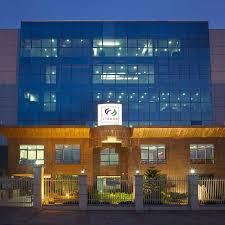
Turnover: The management reported growth in turnover/top-line all through the first three quarters of 2020. Note that the quarter four numbers featured below represent that of the 2019 financial year. Specifically, Fidson’s turnover grew from N3.53 billion in the first quarter of the year to N8.20 billion in the second quarter, and then N13.64 billion in the third quarter of the year under review. We have projected that the full-year Turnover will not be less than N17.741 billion in the fourth quarter of 2020.
Profit after Tax: following the same trend, there was an outstanding improvement in profit from the first quarter through the third quarter of the year under review. As can be seen from the below table, the nine months Profit is over 100% of the profit reported for the 2019 full year performance. We do not expect full-year earnings to come less than 30.32% over the third quarter number.
| FIDSON HEALTHCARE | ||||
| INVESTMENT/VALUATION RATIOS | ||||
| Q1 | Q2 | Q3 | Q4 | |
| TURNOVER | 3,537,437,000 | 8,204,741,000 | 13,647,458,000 | 14,062,015,000 |
| COST OF SALES | 2,025,687,000 | 4,634,600,000 | 6,893,518,000 | 8,186,458,000 |
| PAT | 151,958,000 | 500,635,000 | 976,387,000 | 407,188,000 |
| RATIOS ANALYSIS | ||||
| DIRECT COST TO TURNOVER RATIO | 57.26% | 56.49% | 50.51% | 58.22% |
| PROFIT MARGIN | 4.30% | 6.10% | 7.15% | 2.90% |
| ASSETS TURNOVER RATIO | 10.86% | 33.81% | 52.54% | 69.05% |
| EPS | 0.10 | 0.24 | 0.47 | 0.20 |
| PE/RATIO | 29.22 | 14.25 | 8.12 | 13.07 |
| EARNINGS YIELD | 3.42% | 7.02% | 12.32% | 7.65% |
| BOOK VALUE PER SHARE | 6.53 | 4.85 | 4.93 | 4.61 |
Ratios Analysis
- Direct Cost: Our review of the numbers showed that the direct cost of running the business adjusted down quarter-on-quarter. In our opinion, this was helped by various measures put in place to combat the pandemic. In other words, the incentives, movement restrictions amongst others contributed to the reduction posted on the direct cost of running the business throughout the three quarters reported so far in 2020.
- Profit Margin: Profit Margin improved through the three quarters as some cost was adjusted during the quarters. The ratio improved from 4.3% in the first quarter of the year to 6.10% and 7.15% in the third quarter of 2020. Note that Profit margins from the first quarter of the year were far better than estimated margin at the end of 2019 financial year.
- Asset Turnover: In the same Trend, Asset Turnover appreciated outstandingly through the quarters observed, although this should be the normal trend, especially since Fidson’s assets dropped slightly within the quarters. Investdata Research is of the opinion that the growth is also a pointer to the company’s positive performance within the year.
- Earnings Per Share (EPS): The current EPS of Fidson healthcare at the end of the nine-month ended September 30th 2020 stood at N0.47, already more than double the N0.20 earned in the 2019 full-year.
- P/E-Ratio: Confirming the rapid earnings growth against the price of Fidson Healthcare share price on the NSE, the P/E-Ratio adjusted down to 8.12x, from 29.22x in the first quarter.
- Earnings Yield: Similarly, the earnings yield improved QoQ from 3.42% in the first quarter to 12.32% in the third quarter of the year.
- Book Value: The Book Value of Fidson Healthcare is currently estimated at N4.93 per share, an improvement over the N4.85 in the second quarter. Note also that the difference in book values between other quarters and the first quarter was due to change in share outstanding, after the first quarter earnings was reported.
GlaxoSmithkline
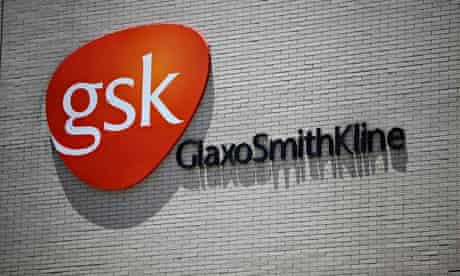
Turnover: Turnover for the period grew from N4.98 billion in the first quarter of 2020 to N10.43 billion in the second quarter and N16.44 billion in the third quarter of the year. However, unlike the case of Fidson, the third-quarter number is still below the amount reported at the end of 2019 full-year.
Profit after Tax: In the same trend, profit reported for the first three quarters of 2020 showed some improvements, beginning with N113.47 million at the end of the first quarter; N304.53 million at half-year; followed by N434.32 million at the end of third quarter of 2020. See the below table for details:
| GLAXO SMITHKLINE | ||||
| INVESTMENT/VALUATION RATIOS | ||||
| Q1 | Q2 | Q3 | Q4 | |
| TURNOVER | 4,989,967,000 | 10,431,524,000 | 16,447,206,000 | 20,760,320,000 |
| COST OF SALES | 3,491,332,000 | 7,662,727,000 | 12,028,935,000 | 14,708,020,000 |
| PAT | 113,473,000 | 304,538,000 | 434,321,000 | 917,105,000 |
| RATIOS ANALYSIS | ||||
| DIRECT COST TO TURNOVER RATIO | 69.97% | 73.46% | 73.14% | 70.85% |
| PROFIT MARGIN | 2.27% | 2.92% | 2.64% | 4.42% |
| ASSETS TURNOVER RATIO | 27.43% | 50.56% | 73.89% | 111.10% |
| EPS | 0.09 | 0.25 | 0.36 | 0.77 |
| PE/RATIO | 79.04 | 19.24 | 14.87 | 9.32 |
| EARNINGS YIELD | 1.27% | 5.20% | 6.73% | 10.73% |
| BOOK VALUE PER SHARE | 7.75 | 7.91 | 7.47 | 7.65 |
- Direct Cost: The direct cost of running the business remained high through the first nine months of 2020. For example, 69.97% of the Turnover went into Cost of Sales in the first quarter. The ratio rose to 73.46% in second quarter, before dropping marginally to 73.14% by the third quarter.
- Profit Margin: Since the costs (including the operating expenses) remained up, the profit margin stayed low through the three periods of 2020. The ratio ranged between 2.27% to 2.92%.
- Asset Turnover: The outstanding growth seen on the Turnover Value improved the Assets Turnover ratio in the periods under review, building from 27.43% in the first quarter of the year to 50.56% in the second quarter and 73.89% by the third quarter.
- Earnings Per Share (EPS): As seen on the Profit line, the amount earned per unit of Glaxo-Smithkline improved through the periods from N0.09 in the first quarter to N0.25 in the second quarter and then N0.36. Our projection model has expects full-year EPS at about N0.41 each.
- P/E-Ratio: With the high Share Price and low EPS in the Q1, the PE/Ratio of GSK was very high at 79.04x. Meanwhile, investors repriced the shares lower from the first quarter, seemingly ignoring the earnings improvement, such that the half year PE/Ratio adjusted to 19.24x, before turning south at 14.87x in the third quarter of the year 2020. It is important to understand that the company’s PE/Ratio may increase for the last quarter of the year, since the price of GSK closed at over N7.00 as at the time this report was being compiled.
- Earnings Yield: Going by the same factor of price revaluation after the first quarter of the year, the amount estimated as the earnings on each unit of Glaxo-Smithkline share price improved from the first quarter through the third quarter as shown in the table above.
- Book Value: With the Net Assets of Glaxo-Smithkline growing mildly through the observed quarters, estimated book value remained stable during the period. As shown in the table above, the ratio ranged between N7.47 and N7.91 through the year.
May & Baker
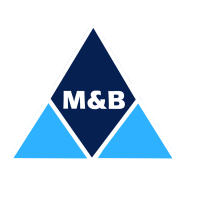
- Turnover: As seen in other members of the sector above, May & Baker equally reported an outstanding growth in its Turnover figure through the first three reported quarters in 2020. As shown in the table below, the Turnover appreciated from N1.82 billion in the first quarter of the year to N4.07 billion in the half-year and N6.43 billion by the end of Q3. Nevertheless, our valuation tools only projected a slight improvement of about 13.37% over the third quarter in the 2020 full year.
- Profit after Tax: Following the same pattern, the profit for the three periods grew outstandingly from N42.79 million at the end of the first quarter of the year, to N438.88 million in the second quarter and N681.73 million at the end of nine months.
| MAY & BAKER | ||||
| INVESTMENT/VALUATION RATIOS | ||||
| Q1 | Q2 | Q3 | Q4 | |
| TURNOVER | 1,829,408,000 | 4,072,366,000 | 6,438,066,000 | 8,080,390,000 |
| COST OF SALES | 1,390,790,000 | 2,480,285,000 | 3,741,854,000 | 5,174,864,000 |
| PAT | 42,798,000 | 438,886,000 | 681,731,000 | 716,440,000 |
| RATIOS ANALYSIS | ||||
| DIRECT COST TO TURNOVER RATIO | 76.02% | 60.91% | 58.12% | 64.04% |
| PROFIT MARGIN | 2.34% | 10.78% | 10.59% | 8.87% |
| ASSETS TURNOVER RATIO | 16.88% | 35.73% | 46.38% | 85.11% |
| EPS | 0.02 | 0.25 | 0.40 | 0.42 |
| PE/RATIO | 115.69 | 11.79 | 7.72 | 6.45 |
| EARNINGS YIELD | 0.86% | 8.48% | 12.96% | 15.50% |
| BOOK VALUE PER SHARE | 3.43 | 3.41 | 3.55 | 3.40 |
- Direct Cost Ratios: It was observed that the direct cost of running the business only adjusted southwards through the quarters observed. The ratio moved from 76.02% in the first quarter to 60.91% in the second quarter, and 58.12% in the third quarter of the year.
- Profit Margin: Reflecting the growth in the Profit line, as against the Turnover growth, the Profit Margin improved after the first quarter to 10.78% in the second quarter and 10.59% in Q3.
- Asset Turnover: Assets Turnover improved outstandingly through the periods. We have estimated 16.88% in the first quarter, 35.73% in the half year and 46.38% in the third quarter the year.
- Earnings Per Share (EPS): Following similar pattern as the Profit after Tax, the amount earned on each listed unit of May & Baker estimated at N0.02 in the first quarter, jumped to N0.25 in the second quarter, before improving to N0.40 in the third quarter of the year. We expect EPS to stay around N0.49 for full year.
- P/E-Ratio: Due to the very low earnings per share at the end of the first quarter in 2020, the PE/Ratio remained very high, signifying investor’s preference for the shares. Nevertheless, the ratio dropped through the last two quarters as Earnings soared while price on the floor of exchange improved marginally.
- Earnings Yield: Earnings yield equally stood low at the end of the first quarter, and soared to 8.48% at the end of the half year business session. The ratio improved to 12.96% at the end of the third quarter of the year. See the above table for details.
- Book Value: Due to the mild growth in Net Assets while share outstanding remained stable, the Book Value recorded marginal improvements through the three quarters observed in this report. See the table above for details.
Neimeth
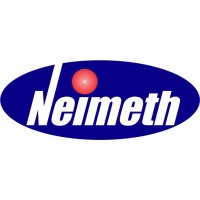
- Turnover: We observe that the numbers for Neimeth only start reflecting the impact of the favourable fiscal and monetary policies from third quarter. Neimeth grew its Turnover figure QoQ from N606.47 million in the first quarter to N1.16 billion in the second quarter and N2.00 billion in the third quarter of the year. Our projection model had expects full-year turnover at over N3.00 billion.
- Profit after Tax: Profit was on a swing through the periods, dropping from N82.65 million in the first quarter to N56.59 million in the second quarter, before soaring to N237.62 million by the third quarter. Note that the third quarter profit is slightly above the full-year profit figure posted at the end of 2019.
| NEIMETH INT’L | ||||
| INVESTMENT/VALUATION RATIOS | ||||
| Q1 | Q2 | Q3 | Q4 | |
| TURNOVER | 606,475,000 | 1,165,166,000 | 2,006,036,000 | 2,839,119,000 |
| COST OF SALES | 303,768,000 | 611,906,000 | 908,568,000 | 1,329,701,000 |
| PAT | 82,652,000 | 56,596,000 | 237,627,000 | 212,476,000 |
| RATIOS ANALYSIS | ||||
| DIRECT COST TO TURNOVER RATIO | 50.09% | 52.52% | 45.29% | 46.83% |
| PROFIT MARGIN | 13.63% | 4.86% | 11.85% | 7.48% |
| ASSETS TURNOVER RATIO | 20.35% | 32.76% | 32.46% | 44.08% |
| EPS | 0.04 | 0.03 | 0.13 | 0.11 |
| PE/RATIO | 12.64 | 20.13 | 11.99 | 19.93 |
| EARNINGS YIELD | 7.91% | 4.97% | 8.34% | 5.02% |
| BOOK VALUE PER SHARE | 0.61 | 0.59 | 0.68 | 0.67 |
- Direct Cost Ratios: Direct Cost to Turnover ratio grew marginally from 50.09% in the first quarter to 52.52% in the second quarter, and dropped to 45.29% in the third quarter of 2020. We expect a more controlled ratio for the fourth quarter of the year.
- Profit Margin: From the 13.63% profit margin estimated at the end of the first quarter, it crashed to 4.86% in the second quarter, before rising to 11.85% in the third quarter of the year. We note that safe for the second quarter margin, profit margin for the year will come above the 2019 full-year.
- Asset Turnover: Unlike other ratios, Assets Turnover improved through the three quarters of 2020. The ratio stood at 20.35% in the first quarter, improved to 32.76% in the half-year and 32.46% in the third quarter of the year.
- Earnings Per Share (EPS): The EPS of Neimeth’s listed shares was estimated at N0.04 in the first quarter, N0.03 in the second quarter and N0.13 in the third quarter. Our projection model showed an improvement commencing from the third quarter of the year, based on which we project an average growth in earnings from the last quarter
- P/E-Ratio: PE/Ratio looked good and attractive on the average in the first quarter, soaring to 20.13x by Q2, but adjusted to 11.99x in the third quarter as investors started a price revaluation on the exchange floor.
- Earnings Yield: Following the same trend, Earnings yield stood at N7.91% in the first quarter, but since earnings did not complement price in the second quarter, the ratio dropped to 4.97% and improved to 8.34% in the third quarter as earnings improved.
- Book Value: We have estimated the book value of Neimeth to range within N0.59 to N0.68 during the period under review. Do note that this is far below its share price of N2.06 on the floor of the exchange when this report was compiled.
Last Lines
All factors considered, Investdata Research believes that the Covid-19 pandemic has been a blessing in disguised to the nation’s healthcare sector, because it exposed the huge inadequacies therein after decades of sure and steady neglect, with top government officials and private individuals flying abroad for the mildest of medical issues. This trend, popularly referred to as medical tourism, and the neglect of the sector has also led to a sustained drain of Nigeria’s best medical minds abroad, frustrated by the lack of equipment and poor funding.
The pandemic forced the government to turn attention to the sector and they attempted to address the various public health challenges posed by its outbreak, even as the CBN expanded its intervention in the sector, enhancing access to cheaper funds for operators-both big and small. These attempts to boost capacity, attract new technology and create jobs, have resulted in improved activities in the sector, and may possibly result in companies reporting stronger sales and revenue growth in 2021.
Investdata expects this to greatly support increased Earnings Per Share which would ultimately become the main driver of returns, as we project 15% EPS growth in 2021 and 25% in 2022 in the sector.
We would therefore expect that, given the improvements so far reported in the Nigerian health sector as would be seen in the full-year numbers expected anytime soon for those with December year-end, investors should look the way of this sector, depending on their investment goals and objective.
